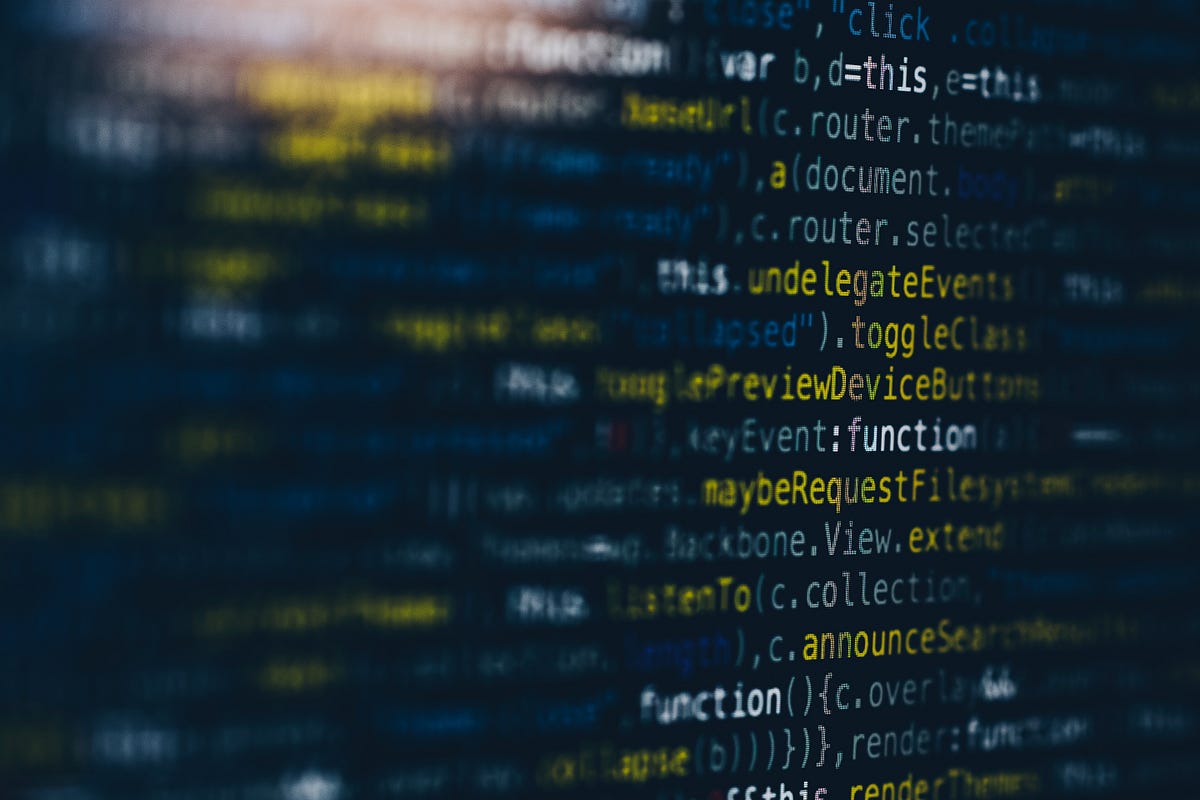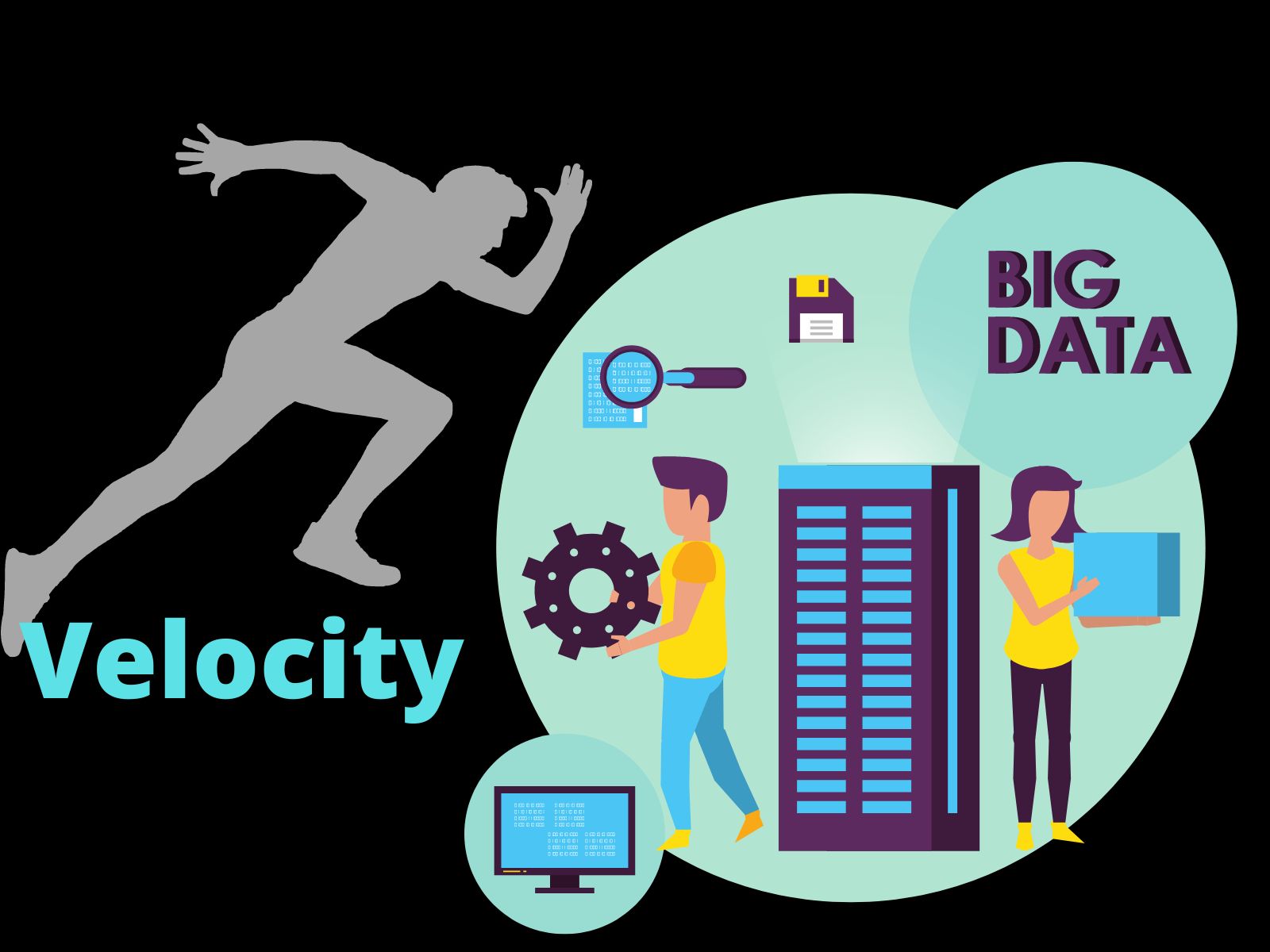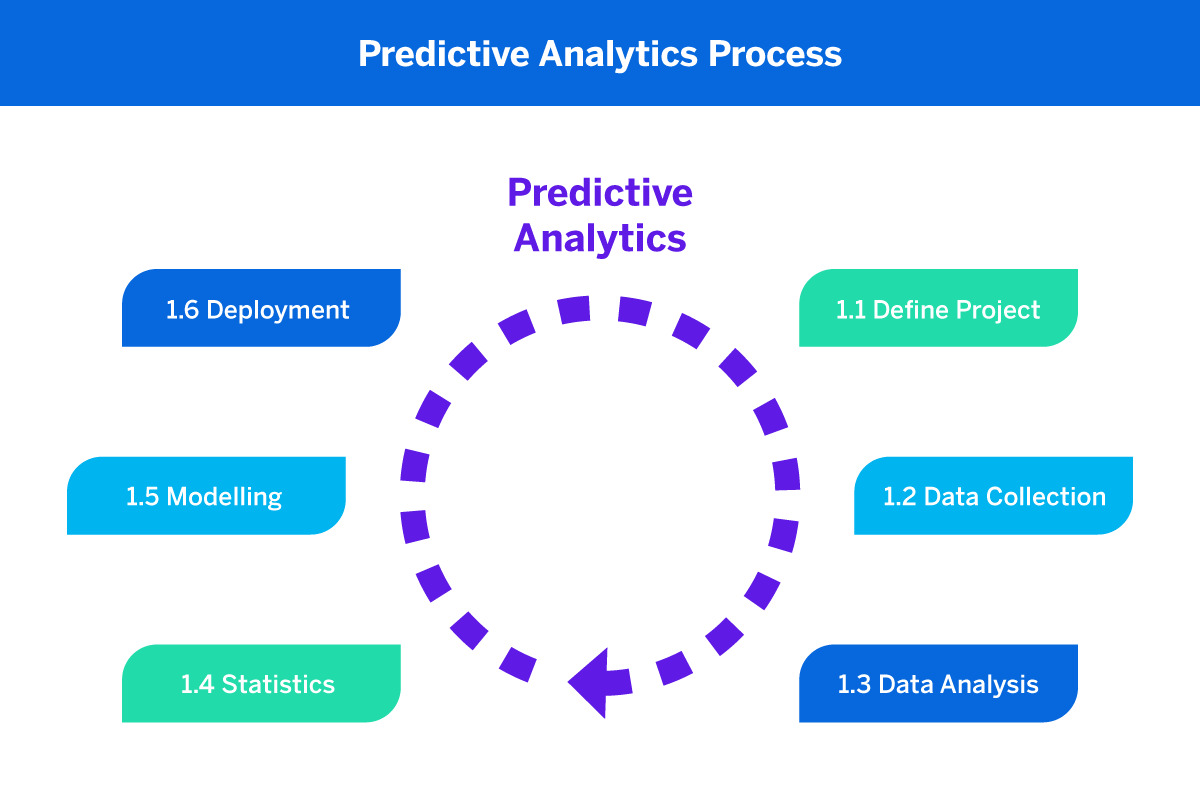Introduction
With the rise of technology and the increasing digitization of data, businesses and organizations are dealing with vast amounts of information like never before. This abundance of data, commonly referred to as “big data,” holds valuable insights that can drive decision-making and lead to improved operations and strategies.
However, big data is not always clean and pristine. It can be riddled with errors, inconsistencies, and inaccuracies, making it challenging to extract meaningful and reliable information. This is where the process of data cleaning or data filtering plays a crucial role.
Data cleaning refers to the process of identifying and rectifying or removing errors, inconsistencies, and discrepancies from large datasets. It involves a series of techniques and methods that aim to enhance the quality and reliability of data, ensuring it is accurate, complete, and consistent.
The importance of data cleaning cannot be understated. Clean data forms the foundation for effective data analysis, machine learning models, and business intelligence. By ensuring data accuracy and consistency, organizations can make informed decisions, improve the accuracy of predictive algorithms, and enhance overall data-driven operations.
In this article, we will explore the significance of data cleaning in the context of big data. We will delve into various techniques employed to clean big data, including duplicate removal, missing value treatment, outlier detection and handling, normalization and scaling, data transformation and standardization, data validation and accuracy checking, reducing noise and inconsistent data, and handling incomplete data.
By understanding the techniques and methodologies involved in data cleaning, businesses and data professionals can effectively cleanse their big data assets, leading to improved data quality, actionable insights, and better business outcomes.
Understanding Big Data Cleaning
Big data cleaning is a crucial step in the data management process that aims to improve the quality and reliability of large datasets. It involves identifying and addressing various types of errors, inconsistencies, and discrepancies within the data to ensure accuracy and consistency.
One of the main challenges with big data cleaning is the sheer volume and complexity of the data. Big data sets can encompass thousands or even millions of records, often collected from various sources and in different formats. This makes it a daunting task for data professionals to identify and rectify errors manually.
To tackle this challenge, automated data cleaning techniques are employed. These techniques use algorithms and statistical methods to identify and fix errors, outliers, and inconsistencies in the data. They can handle large volumes of data quickly and efficiently, saving valuable time and resources.
Big data cleaning involves several key steps. Firstly, duplicate removal is essential to eliminate redundant records from the dataset. Duplicates can arise due to multiple data sources or errors in data collection processes. By identifying and removing duplicates, data accuracy and efficiency can be significantly improved.
Another critical step in big data cleaning is missing value treatment. Large datasets often have missing values, which can skew analysis and predictions. Various methods, such as imputation or deletion, are used to handle missing data, ensuring the dataset is complete and suitable for analysis.
Outlier detection and handling is also vital in big data cleaning. Outliers are extreme values that deviate significantly from the average or expected values. They can distort statistical analysis and models. Techniques such as statistical tests and clustering algorithms are employed to identify and handle outliers effectively.
Normalization and scaling are techniques used to standardize and transform data to a common scale, making it easier to compare and analyze. This step ensures that data from different sources and variables are comparable and can be effectively used in modeling and analysis.
Data transformation and standardization involve converting data into a consistent and usable format. This step includes tasks such as removing unnecessary features, converting categorical variables into numerical representations, and ensuring data consistency and formatting.
Data validation and accuracy checking are crucial in big data cleaning to ensure the quality and integrity of the data. Validating the data against predefined rules and constraints helps identify errors and inconsistencies that might have been missed during the initial data collection or recording process.
Reducing noise and handling inconsistent data involves techniques like filtering out irrelevant information, removing irrelevant variables, and resolving conflicts between contradictory records or values. This step improves the overall quality and reliability of the data.
Lastly, handling incomplete data is an essential aspect of big data cleaning. Incomplete data refers to missing values, unknown or unrecorded information, or partly available information. Techniques like imputation, estimation, or statistical methods are used to handle incomplete data effectively.
Overall, understanding big data cleaning is crucial for organizations dealing with large and complex datasets. By employing systematic techniques and methods, businesses can ensure the accuracy, reliability, and efficiency of their data assets, leading to improved decision-making and better insights for various applications.
Importance of Data Cleaning
Data cleaning is of utmost importance when dealing with big data. It ensures that the data used for analysis, modeling, and decision-making is accurate, reliable, and consistent. Here are some key reasons why data cleaning is crucial:
1. Enhances Data Accuracy: Data cleaning processes eliminate errors, inconsistencies, and inaccuracies in the dataset. By removing duplicate records, handling missing values, and treating outliers, the accuracy of the data is significantly improved. This ensures that subsequent analyses and predictions are based on reliable and trustworthy information.
2. Improves Decision-Making: Clean data leads to better decision-making. When data is accurate and reliable, organizations can make informed decisions, identify patterns, and uncover valuable insights. This is particularly important in industries such as finance, healthcare, and marketing, where decisions based on flawed or incomplete data can have serious consequences.
3. Increases Efficiency: Clean data streamlines data analysis and processing. By removing duplicates and resolving inconsistencies, data professionals can focus on relevant information, saving time and resources. This leads to more efficient data management processes and faster data-driven decision-making.
4. Enhances Data Integration: When merging or integrating datasets from multiple sources, data cleaning becomes essential. It ensures harmonization and standardization of data across different systems, making it possible to leverage the full potential of integrated datasets. Without data cleaning, inconsistencies and inaccuracies between datasets can severely affect data integration projects.
5. Boosts the Performance of Machine Learning Models: Machine learning algorithms heavily rely on the quality of training data. By cleaning the data beforehand, organizations can significantly improve the accuracy and performance of their machine learning models. Removing outliers, handling missing values, and ensuring data consistency can prevent models from being biased or producing unreliable predictions.
6. Supports Regulatory Compliance: Many industries operate under strict regulations and compliance requirements. Data cleaning plays a crucial role in ensuring compliance with data privacy laws and regulations. By removing personally identifiable or sensitive information, organizations can mitigate risks of data breaches and maintain compliance with data protection regulations.
7. Enhances Customer Experience: Clean data is essential for delivering personalized and targeted customer experiences. By eliminating duplicates and ensuring accurate customer information, organizations can provide customers with a seamless and personalized experience. This leads to improved customer satisfaction, loyalty, and overall business success.
Overall, data cleaning is not just a technical process; it is a critical step in data management that directly impacts decision-making, efficiency, and overall data reliability. By investing in data cleaning practices, organizations can unlock the full potential of their big data assets and gain a competitive edge in the data-driven era.
Techniques to Clean Big Data
Cleaning big data involves employing various techniques to ensure data accuracy, consistency, and reliability. Here are some common techniques used to clean big data:
- Duplicate Removal: Duplicate records can skew analysis and waste storage space. By identifying and removing duplicates, organizations can improve data quality and efficiency. Techniques such as hashing or matching algorithms can be used to identify and eliminate duplicate records.
- Missing Values Treatment: Missing data is a common problem in big datasets. Techniques such as imputation, where missing values are estimated based on existing data, or deletion of records with missing values can be employed to handle missing data. The choice of technique depends on the nature and impact of the missing data.
- Outlier Detection and Handling: Outliers are extreme values that deviate significantly from the rest of the data. These can be errors or anomalies that need to be identified and handled appropriately. Statistical methods, data visualization techniques, or clustering algorithms can be used to identify and handle outliers, such as removing them or replacing them with more appropriate values.
- Normalization and Scaling: Normalization and scaling techniques ensure that data from different sources or with different units of measurement are on a common scale. This is important for accurate comparisons and analysis. Techniques such as min-max scaling or Z-score normalization can be applied to standardize data.
- Data Transformation and Standardization: Data transformation involves converting data into a more suitable format for analysis. This includes tasks like removing unnecessary features, converting categorical variables into numerical representations, or encoding text data. Standardization ensures consistent formatting and representation of data across variables and datasets.
- Data Validation and Accuracy Checking: Data validation involves verifying the integrity and validity of data. This can be done through predefined rules or constraints to check for errors or inconsistencies. Techniques such as data profiling, statistical tests, or rule-based checks can be utilized to validate the data and ensure its accuracy.
- Reducing Noise and Inconsistent Data: Noise refers to irrelevant or distorted data that can interfere with analysis. Techniques such as filtering out irrelevant information or removing variables with low correlation to the target variable can reduce noise. Inconsistent data can arise due to data entry errors or merging datasets. Techniques such as resolving conflicts, standardizing formats, or using data validation checks can help handle inconsistent data.
- Handling Incomplete Data: Incomplete data refers to missing values, unknown or unrecorded information, or partly available data. Techniques such as imputation, estimation, or statistical methods can be employed to handle incomplete data effectively. The goal is to minimize the impact of missing data on subsequent analysis while preserving data integrity.
These techniques are not mutually exclusive and can be used in combination to clean big data effectively. The choice of techniques depends on the nature of the data, the specific cleaning requirements, and the analysis goals. By employing these techniques, organizations can ensure the accuracy, consistency, and reliability of their big data, leading to better insights and informed decision-making.
Duplicate Removal
Duplicate records are a common occurrence in big datasets and can significantly impact data analysis and processing. Duplicate removal is an essential technique in data cleaning that aims to identify and eliminate redundant records.
Duplicates can arise due to various reasons, such as data entry errors, system glitches, or merging data from multiple sources. They can skew statistical analysis, lead to inaccurate results, and waste storage space. Therefore, it is crucial to identify and remove duplicates to ensure data accuracy and efficiency.
There are several methods for duplicate removal, depending on the characteristics of the data and the level of precision required. One common approach is using hashing techniques, where a unique identifier or hash value is assigned to each record. By comparing these hash values, duplicate records can be identified and eliminated.
Another method is using matching algorithms, such as the Jaccard similarity or Levenshtein distance, to compare the similarity between records. If the similarity exceeds a predefined threshold, the records are considered duplicates and can be removed.
In addition, advanced machine learning techniques, such as clustering algorithms or probabilistic record linkage methods, can be employed to identify duplicates. These techniques can handle complex scenarios where duplicates might have variations in values or appear in different forms.
It is important to note that duplicate removal should be performed carefully to avoid the inadvertent deletion of valid data. A thorough understanding of the data and the particular requirements of the analysis is crucial in determining the appropriate approach for duplicate removal.
By effectively removing duplicates, organizations can ensure data accuracy and consistency, enhance analytical results, and optimize storage and processing resources. This technique forms the foundation for reliable and actionable data analysis in the big data landscape.
Missing Values Treatment
Missing values are a common challenge when working with big data. They can occur due to various factors such as data collection errors, system issues, or intentional omission. Missing values can render data analysis incomplete and lead to biased or inaccurate results. Therefore, it is essential to handle missing values appropriately during the data cleaning process.
There are several techniques available for treating missing values in big datasets:
Deletion: One simple approach is to remove records or variables with missing values from the dataset. This approach, known as listwise deletion or complete-case analysis, is straightforward to implement. However, it may result in a loss of valuable information, especially if the missing values are randomly distributed.
Mean/Median Imputation: Mean or median imputation is a popular technique for handling missing numerical values. The missing values are replaced with the mean or median value of the respective variable. This approach is simple but assumes that the missing values are missing completely at random and that the mean or median represents a reasonable estimate.
Mode Imputation: Mode imputation is used for handling missing categorical values. The missing values are replaced with the mode, i.e., the most frequent category of that variable. This approach is suitable when the missing categorical values are not expected to have a significant impact on the analysis.
Regression Imputation: Regression imputation involves using regression models to predict missing values based on other variables that are not missing. A regression model is built using the complete cases, and then the model is used to predict the missing values of the target variable. This approach takes into account the relationships between variables and can provide more accurate imputations.
Mixed Imputation: Mixed imputation involves using a combination of imputation techniques for different variables in the dataset. This approach recognizes that different variables may have different missing data patterns and requires a tailored approach for each variable.
Multiple Imputation: Multiple imputation is a more sophisticated technique that generates multiple plausible values for each missing value instead of replacing it with a single imputed value. Multiple imputation accounts for the uncertainty associated with imputing missing values and provides a more robust estimation of the parameters and analysis results.
The choice of missing values treatment technique depends on various factors, including the nature of the missing data, the underlying assumptions, and the specific analysis goals. It is important to carefully consider the limitations and assumptions of each technique when making decisions about how to handle missing values in big datasets.
By appropriately handling missing values, organizations can ensure the integrity and completeness of their data, facilitating accurate and reliable analysis and decision-making processes in the realm of big data.
Outlier Detection and Handling
Outliers are extreme values that deviate significantly from the rest of the data in a dataset. They can arise due to measurement errors, data entry mistakes, or genuine anomalies in the data. Outliers can have a significant impact on statistical analysis and modeling, leading to skewed results and inaccurate predictions. Therefore, outlier detection and handling is a crucial step in data cleaning.
Identifying outliers can be done using various statistical techniques and visualizations. One common approach is to use descriptive statistics such as the mean, median, and standard deviation to measure the central tendency and spread of the data. Observations that fall outside a certain range, such as three standard deviations from the mean, can be considered as potential outliers.
Data visualization techniques, such as box plots, scatter plots, or histograms, can also help identify outliers visually. Observations that lie far away from the bulk of the data points or exhibit unusual patterns can be flagged as outliers.
Once outliers are identified, they can be handled in different ways:
1. Removal: In some cases, it may be appropriate to remove outliers from the dataset, especially if they are determined to be data entry errors or measurement outliers. However, caution should be exercised to ensure that the removal of outliers does not introduce bias or affect the overall integrity of the data.
2. Transformation: Instead of removing outliers, transforming the data can be a viable option. Transformations such as logarithmic or square root transformations can help normalize the distribution and reduce the impact of outliers on subsequent analysis.
3. Capping or Winsorization: Capping or winsorizing involves setting a threshold for outliers and replacing extreme values with a predetermined boundary value. This approach preserves the information from the outliers while limiting their influence on the analysis.
4. Modeling Techniques: Some modeling techniques, such as robust statistics or outlier-resistant algorithms, are inherently designed to handle outliers. These techniques downweight or disregard outlier values, ensuring that the analysis is not heavily influenced by extreme observations.
It is important to consider the context and the specific aims of the analysis when deciding how to handle outliers. In some cases, outliers may contain valuable information or genuine anomalies that are worth investigating further, while in others, they may be negligible or detrimental to the analysis.
By effectively detecting and handling outliers, organizations can improve the accuracy and reliability of their data analysis processes and decision-making. Outlier detection and handling are essential in ensuring that the insights derived from big data are accurate, robust, and representative of the underlying patterns and trends.
Normalization and Scaling
Normalization and scaling are important techniques used to standardize and transform data in the process of cleaning big data. These techniques ensure that data from different sources or with different units of measurement are on a common scale, making them easier to compare, analyze, and interpret.
Normalization involves transforming data to a specific range or distribution. The purpose of normalization is to eliminate the influence of the original scale or units of measurement on the analysis. This is particularly important when dealing with variables that have different magnitudes or widely varying ranges. Common normalization techniques include min-max scaling and Z-score normalization.
Min-max scaling, also known as feature scaling, transforms the data so that the minimum value of the variable is mapped to 0 and the maximum value is mapped to 1. This ensures that all values fall within the range of 0 to 1, enabling direct comparisons between variables.
Z-score normalization, on the other hand, transforms the data to have a mean of 0 and a standard deviation of 1. This allows for standardized comparisons by representing each value in terms of its deviation from the mean.
Scaling, on the other hand, is the process of adjusting the range of variables while preserving the shape of the distribution. It is particularly useful when working with variables that have different units or scales of measurement. Scaling ensures that all variables are on a consistent scale, allowing for fair comparisons and analysis.
There are various scaling techniques available, including:
- Standardization: Standardization scales the data using the mean and standard deviation. It transforms the data to have a mean of 0 and a standard deviation of 1.
- Decimal Scaling: Decimal scaling scales the data by dividing each value by a power of 10. This reduces the range of values while preserving the relative differences between them.
- Normalization by Range: Normalization by range scales the data to a specific range, such as -1 to 1 or 0 to 1. It preserves the shape of the data distribution while adjusting the range of values.
The choice between normalization and scaling techniques depends on the specific characteristics of the data and the goals of the analysis. Normalization is suitable when the distribution of the data is important, whereas scaling is preferable when the units or scales of measurement play a significant role.
Overall, normalization and scaling play a vital role in cleaning big data by ensuring that variables are on a common scale and facilitating fair comparisons and analysis. The application of these techniques improves the accuracy and reliability of data-driven decisions and enhances the overall understanding of patterns and relationships within the data.
Data Transformation and Standardization
Data transformation and standardization are crucial techniques used in the process of cleaning big data. These techniques involve converting data into a consistent and usable format, ensuring accuracy, compatibility, and reliability across the dataset.
Data transformation encompasses a range of tasks aimed at improving the usability and quality of the data. Some common data transformation techniques include:
- Feature Selection: Feature selection involves identifying and selecting the most relevant variables or features for analysis, discarding unnecessary or redundant information. This helps reduce dimensionality and focuses the analysis on the most impactful variables.
- Categorical Variable Encoding: Categorical variables need to be encoded to numerical representations so that they can be effectively used in analysis and modeling. Techniques such as one-hot encoding, label encoding, or ordinal encoding can be applied depending on the characteristics of the data.
- Handling Text Data: Text data often requires special treatment. Techniques like text cleaning, tokenization, stemming, and encoding are employed to transform unstructured text data into structured numerical or categorical representations.
- Feature Scaling: Feature scaling, as discussed in the previous section, involves transforming data to a common scale to ensure fair comparisons and analysis. It eliminates the influence of different units or measurement scales on the results.
Standardization, on the other hand, focuses on ensuring consistent formatting and representation of data across variables and datasets. Standardization includes tasks such as:
- Formatting: Ensuring consistent and standardized formatting conventions for dates, times, currencies, or any other specific data formats.
- Unit Conversion: Converting data from one unit of measurement to another to ensure uniformity and compatibility. This is essential when integrating data from various sources with different measurement units.
- Codebook Development: Creating documentation or codebooks that provide a comprehensive description of variables, codes, and metadata. Codebooks help maintain consistency and enable better understanding and interpretation of the data.
Data transformation and standardization are critical steps in data cleaning, helping to ensure that the data is in a consistent and usable format for analysis and modeling. These techniques facilitate accurate comparisons, meaningful insights, and reliable decision-making from big data.
Data Validation and Accuracy Checking
Data validation and accuracy checking are vital steps in the data cleaning process. They involve verifying the integrity, validity, and accuracy of the data to ensure its reliability and suitability for analysis and decision-making.
Data validation involves checking whether the data adheres to pre-defined rules, constraints, or standards. This helps identify errors, inconsistencies, or discrepancies that may have occurred during data collection, recording, or entry. Validation rules can include checks for data types, allowable ranges, unique identifiers, or specific formatting. By validating the data, organizations can ensure that it meets quality standards and is fit for the intended purpose.
Data accuracy checking focuses on verifying the correctness and truthfulness of the data. It involves cross-referencing the data with reliable sources, conducting data quality assessments, or using statistical methods to identify potential inaccuracies. Accuracy checking can help identify data entry errors, measurement inaccuracies, or discrepancies between different sources. By confirming the accuracy of the data, organizations can have confidence in the analysis and decision-making based on the data.
Techniques used for data validation and accuracy checking include:
- Descriptive Statistics: Descriptive statistics such as mean, median, standard deviation, or range can be calculated to assess the plausibility and reasonableness of the data. Extreme values or outliers can indicate potential data errors.
- Data Profiling: Data profiling involves analyzing the structure, patterns, and characteristics of the data to identify anomalies or inconsistencies. This can include checking for missing values, duplicate records, invalid values, or unexpected data patterns.
- External Data Comparison: Cross-referencing the data with external sources or reference datasets can help validate its accuracy and completeness. Confirming data against trusted sources or conducting reconciliation checks ensures consistency and reliability.
- Outlier Detection: Outliers can indicate potential errors or unusual data points. Statistical techniques or visualizations can be utilized to identify outliers and investigate their validity.
- Data Sampling: Sampling a subset of the data for manual review or verification can help identify errors or inconsistencies that may not be apparent through automated validation techniques. Manual review allows for a more detailed investigation into the accuracy and reliability of the data.
Data validation and accuracy checking are iterative processes that require careful attention and an understanding of the data’s context and quality requirements. By ensuring the integrity and accuracy of the data, organizations can have confidence in the outcomes and insights generated from the analysis, enabling better decision-making and mitigating risks associated with flawed or unreliable data.
Reducing Noise and Inconsistent Data
Noise and inconsistent data can significantly affect the accuracy and reliability of big data analysis. Noise refers to irrelevant or misleading information present in the dataset, while inconsistent data refers to conflicting or contradictory values within the dataset. Reducing noise and handling inconsistent data are important steps in the data cleaning process.
Reducing noise involves identifying and filtering out irrelevant or erroneous data points that may interfere with the analysis. By removing noise, organizations can focus on the relevant information and improve the quality of their data. Techniques for reducing noise include:
- Data Smoothing: Data smoothing techniques, such as moving averages or exponential smoothing, can help eliminate random fluctuations in the data and highlight the underlying trends. This reduces noise and provides a clearer picture of the data.
- Outlier Removal: Outliers, as discussed in a previous section, can introduce noise into the analysis. By detecting and removing outliers appropriately, the impact of these extreme values can be minimized.
- Filtering Techniques: Filtering techniques, such as low-pass or high-pass filters, can be used to remove noise from time-series or signal data. These filters help separate the relevant signal from unwanted noise.
Handling inconsistent data involves identifying and resolving conflicts or discrepancies within the dataset. This can occur due to data entry errors, differences in data sources, or inconsistencies in recording or encoding practices. Techniques for handling inconsistent data include:
- Data Integration: When integrating data from multiple sources, inconsistencies in variable names, units, or coding systems can arise. Techniques such as data mapping, standardization, or data reconciliation can be employed to align the data and resolve inconsistencies.
- Data Validation: Data validation techniques, as discussed earlier, can help identify inconsistent data by checking for discrepancies or conflicts against predefined rules or reference datasets. Validation checks can help detect and resolve inconsistencies during the data cleaning process.
- Collaborative Data Cleaning: In some cases, involving subject matter experts or knowledgeable stakeholders can be a valuable approach to resolve inconsistencies. Collaborative efforts can help identify errors or inconsistencies that may be missed through automated techniques alone.
Reducing noise and handling inconsistent data are iterative processes that require careful assessment, understanding of the data, and domain knowledge. By reducing noise and addressing inconsistent data, organizations improve the accuracy and reliability of their analysis, leading to better-informed decisions and actionable insights from big data.
Handling Incomplete Data
Incomplete data refers to missing values, unknown or unrecorded information, or partly available data. Handling incomplete data is a crucial step in the data cleaning process, as missing values can negatively impact analysis and decision-making. Various techniques can be employed to handle incomplete data effectively.
One common approach to handling incomplete data is imputation, which involves estimating missing values based on the available information. Imputation methods can be as simple as replacing missing values with the mean, median, or mode of the respective variable. This approach assumes that the missing values are missing at random and can be reasonably estimated from the existing data.
For more complex situations, more sophisticated imputation techniques can be used. Regression imputation involves using regression models to predict missing values based on other variables. Multiple imputation generates plausible values for missing data by creating multiple imputed datasets and combining the results. These methods consider the relationships between variables and provide more robust estimates than simple mean imputation.
Another approach to handling incomplete data is deletion, where records or variables with missing values are removed from the dataset. Complete-case analysis, also known as listwise deletion, eliminates records with missing values before analysis. However, this approach can lead to a significant loss of data and may introduce bias if the missing data is not completely random.
Additionally, instead of replacing missing values, some models or algorithms are capable of handling missing data directly. These algorithms adjust the calculations or make use of specific missing data indicators to avoid bias in the analysis.
Handling incomplete data requires careful consideration of the nature of the missingness, the degree of missingness, and the analysis goals. The choice of method depends on the specific situation and the impact of the missing data on the analysis.
It is important to note that imputation or deletion should be performed while considering the potential biases that may be introduced. Adequate documentation and transparency about the handling of missing data are essential to ensure the integrity and validity of the analysis.
By effectively handling incomplete data, organizations can minimize the impact of missing values on their analysis, ensure the reliability of the results, and make informed decisions based on a more comprehensive and complete dataset.
Conclusion
Cleaning big data is a critical process that ensures the accuracy, reliability, and usability of large datasets. By employing various techniques such as duplicate removal, missing values treatment, outlier detection and handling, normalization and scaling, data transformation and standardization, data validation and accuracy checking, reducing noise and inconsistent data, and handling incomplete data, organizations can obtain high-quality data for analysis and decision-making.
Through duplicate removal, organizations can eliminate redundant records and improve data accuracy and efficiency. Missing values treatment techniques allow for handling incomplete data, ensuring that the dataset is complete and suitable for analysis. Outlier detection and handling help identify and address extreme values that can distort analysis results. Normalization and scaling techniques ensure that data from different sources and with different units of measurement are on a common scale, facilitating comparisons and analysis. Data transformation and standardization techniques enable the conversion of data into a consistent and usable format. Data validation and accuracy checking techniques verify the integrity and reliability of the data, increasing trust in analysis outcomes. Reducing noise and handling inconsistent data techniques remove irrelevant information and resolve conflicts, improving data quality. Finally, handling incomplete data involves various imputation or deletion methods to address missing values and minimize the impact on subsequent analysis.
Through the implementation of these data cleaning techniques, organizations can enhance data quality, gain accurate and reliable insights, and make informed decisions. Clean data serves as a reliable foundation for data analysis, machine learning models, and business intelligence applications.
It is important to remember that data cleaning is an ongoing process as new data is continually collected and updated. Regularly reviewing and applying these techniques will help maintain data integrity and reliability over time. Data professionals should consider the specific characteristics of their datasets, the objectives of the analysis, and the context of their industry when determining the appropriate data cleaning techniques to apply.
By prioritizing data cleaning practices, organizations can unlock the full potential of big data, leverage its power to drive innovative solutions and gain a competitive edge in the data-driven era.

























